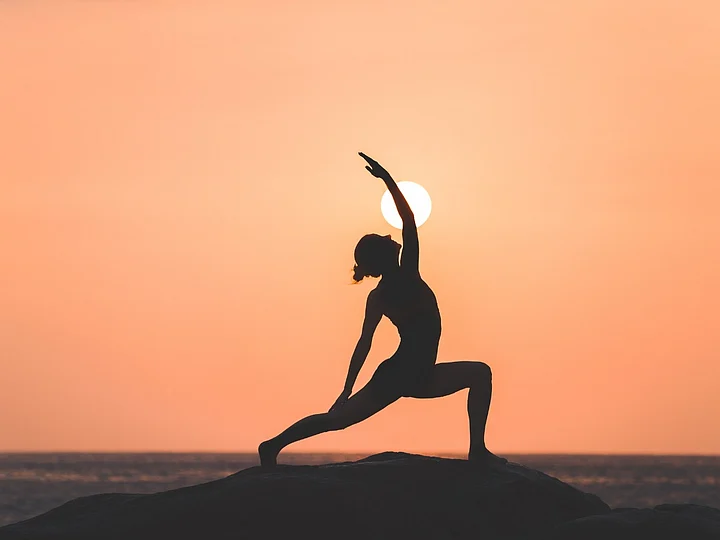Yoga has always been in the good books thanks to its various health benefits. Yoga not only relaxes our body and mind but helps prevent and manage various diseases. According to Healthline, research has proved that certain poses may help lower blood pressure and blood sugar levels, and improves blood circulation, thus making it easier to manage diabetes.
If you practise yoga regularly, it may help reduce the risk of other health complications and heart disease. In this article, we have jotted down a few easy yoga poses that can help improve your overall quality of life and lead to significant transformations.
Yoga cannot treat a condition, diabetes in this case, but it can help manage the severity and symptoms of the condition.
1. Reclining Bound Angle Pose
This yoga pose is a restorative pose that helps calm your nervous system, and reduces stress levels, thus lowering blood pressure and blood sugar levels. This pose also stimulates the abdominal organs, bladder, and kidneys.
It focuses on various muscle groups like adductors, groin muscles, pelvic muscles, and psoas.
Follow the steps here:
Sit down on a yoga mat, and bring the soles of your feet together. Make sure your knees are out to the sides.
Place a bolster underneath your knees to get support.
Now, slowly lean back such that your back is flat on the floor.
Focus on relaxing the area around your hips.
Place your hands on the sides of your body with your palms facing up.
Press down on your thighs to gently deepen the stretch in your legs and hips.
Hold the pose for up to 10 minutes.
Now slowly release by lifting your hands and pressing your knees together. Slowly sit all the way up.
2. Seated Forward Bend
This pose has proven to have a therapeutic effect on the body and mind. It helps lower blood pressure and promotes weight loss, thus relieving anxiety, headache, and fatigue.
It focuses on the muscle groups which include: pelvic muscles, erector spinae, gluteus maximus, and gastrocnemius.
Follow the steps given here:
Sit on the edge of a folded blanket and extend your legs long.
Place a prop under your knees to get support.
Now, you have to imagine your soles pressing against a wall and your toes drawing back towards your shins.
Root into your sit bones, lengthen your spine, and open your heart centre.
Hinge at your hips while you try to bend forward.
Slowly extend your hands down to your feet, and stop when you reach a comfortable position. Your torso should fold into your legs.
Tuck your chin into your chest.
Hold the pose for up to 3 minutes.
3. Supported Shoulder Stand
This is a version of the headstand that helps improve circulation and stimulate the thyroid gland. It also helps calm down the mind and relieve stress.
It focuses on the following muscle groups: rectus abdominis, trapezius, rotator cuff, and quadriceps.
Here are the steps:
Lie flat on your back and place a folded blanket under your shoulders.
Make sure your shoulders are aligned with the edge of the blanket.
Rest your arms alongside your body with your palms facing down.
Slowly lift your legs up into the air.
Now gently lower your legs back toward your head.
Place your hands on your lower back to get some support and your fingers should be facing upward.
Raise your legs in such a way that your shoulders, spine, and hips are in one straight line.
Hold the pose for 30 seconds to 3 minutes.
4. Plow Pose
If you want to try the plough pose, follow the steps given here:
Press your arms to the floor, and lift your legs over your head towards the floor while inhaling. You will have to stretch out through the heels. Now, slowly walk your shoulders towards each other while your chin is up and hands are placed on the lower back for support. Press through the arms, shoulders, and feet if they are on the floor.
This yoga pose helps in stretching the neck, thus stimulating the thyroid glands. It also prevents and relieves tightness in the neck, shoulders, and back. The pose helps strengthen the shoulders, arms, and legs, and enhances flexibility, improves muscle and joint mobility. It also makes the spine more supple to help ease muscle tension and improve posture.
5. Bow Pose
This is an easy and quite effective pose that strengthens the abdominal muscles. According to the Yoga Institute, it is an effective pose to manage the symptoms of diabetes. It is one of the advanced poses, so do not push your body too hard.
Lie flat on the stomach, use a soft surface or a yoga mat.
Bend your knees slowly.
Slowly extend your arms backward and try to clasp the ankles.
Now gently raise the chest off the floor, as far as you can go.
While using the tension between the arms and legs, lift the thighs and upper body off the floor.
Hold the pose for a few seconds, then release.

